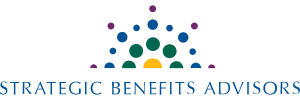Are your clients’ benefits teams feeling a bit frazzled? They’re not alone.
With the International Foundation of Employee Benefit Plans estimating that three-fourths of U.S. organizations plan to conduct open enrollment in October or November, we all know that Q3 is crunch time in the world of employee benefits. But it’s not too late for them to make this year’s open enrollment their most successful ever.
While the annual hustle and bustle of benefits open enrollment may be predictable, each plan year presents fresh challenges. Often these emerge from changes within the organization. Perhaps your client is introducing a new health plan or recently acquired a new eligible population through a business transaction. Their benefits team or third-party administrator may have experienced a lot of turnover this year, sparking worry about critical tasks falling through the cracks. Or maybe they’re juggling competing HR priorities that are making it hard to give open enrollment the attention it demands.
Other open-enrollment challenges arise from regulatory changes that equally affect all plan sponsors. For instance, last year the affordability standards for applicable large employer health plans became tougher than ever. That’s when the IRS reduced the maximum allowed employee contribution for a plan sponsor’s lowest-cost health plan to 9.12% of household income. The IRS hasn’t yet released the affordability threshold for 2024, but if it falls again, plan sponsors may have to lower their employee contributions for 2024 to meet the adjusted percentage.
Even if you’re expecting a business-as-usual open enrollment, it’s likely there are things you would do differently than last time around, given the chance. While every plan sponsor’s open-enrollment challenges are unique, broadly speaking, there are three main areas where we find opportunities for improvement: systems and data; employee communications; and training and support. Let’s unpack each of them.
Get your data ducks in a row.
The sooner important plan-related information is delivered to the plan administrator, the sooner they will be able to configure the enrollment system and participate in testing. Common administrator needs include the payroll calendar for the coming year, information about any new carriers or benefits, and any summaries of material modifications and interim or restated summary plan descriptions that need to be uploaded to the employee self-service portal.
Thorough systems and file testing must be conducted prior to open enrollment to validate the accuracy of eligibility information and rates in the enrollment system, as well as election data included within payroll and carrier files. This testing should be conducted for every combination of benefit plan and feature, taking special care to ensure any new benefit offerings have been properly incorporated into the enrollment flow and all applicable files. Pay close attention to dual-year processing for new hires during or following the open-enrollment window, as well as HSA/FSA/limited FSA offerings and COBRA enrollments.
Once enrollment ends and carrier files are updated — but before the plan year commences — consider auditing the benefits administration system against the carrier data to ensure accuracy. This should be done especially if there’s a passive open enrollment wherein participants’ current elections are rolled forward to the next plan year if they do not actively make an election. Verifying elections and dependents can prevent major headaches down the road and help avoid paying premiums for participants who shouldn’t be covered with a fully insured plan. It’s also a best practice to provide the administrator an actuals deduction file each pay period so they can reconcile payroll deductions throughout the year.
Spread the word.
Employee communication is critical to a successful enrollment process. Insufficient or unclear information leads to confusion and may cause employees to miss out on crucial benefits that align with their needs. To avoid this, plan sponsors should invest in clear and comprehensive communication strategies. Since this process often takes longer than expected, we advise plan sponsors to start as soon as possible, leaving placeholders for rates and other data points that are still being finalized.The first wave of communications should tell employees when open enrollment starts and ends, when to expect benefit materials and where to find them. If distributing enrollment guides by mail, employees should know the process for updating their mailing address and the deadline for doing so. It’s also helpful to ensure materials will arrive at participants’ homes in advance of open enrollment. Printed enrollment guides should be made available online, too; we recommend providing a QR code to make them easy to access.
The more thorough benefit materials are, the fewer questions your client’s internal team and third-party administrator will have to field. At a minimum, the enrollment guide should describe every benefit offered, including premiums, deductions and any available surcharges or credits. It also should explain any changes between current benefit offerings and the upcoming plan year’s benefits. Consider using open enrollment as an opportunity to remind participants to review their 401(k) contribution rates and update their beneficiaries. Finally, be sure to provide crystal-clear instructions on how to access the self-service enrollment website, as well as the service center’s toll-free number and hours of operation for those who need assistance.As enrollment draws closer, provide channels for employees to ask questions and seek clarifications, such as informational sessions or webinars. Bear in mind that certain groups, such as new hires, COBRA participants and newly acquired groups, may require special communications and additional support.
Call in reinforcements.
Inevitably, some participants will have questions for HR. Before open enrollment, ensure your client’s HR team is up to speed on new benefits, plan changes, enrollment processes and key dates. We recommend a live webinar that gives HR personnel the opportunity to ask questions. Recording the session allows anyone unable to attend to review it at their convenience.Next, discuss service center staffing and training with your client’s third-party administrator to ensure the customer service representatives (CSRs) taking calls from plan participants are sufficiently experienced and knowledgeable. Ask to review the knowledge base and other training materials used by CSRs to verify they contain the plan’s most accurate and up-to-date benefit information.
Once open enrollment begins, we suggest employers meet with their administrator on a weekly basis to evaluate enrollment metrics, review open cases and listen to a random selection of call recordings. By jointly evaluating the level of service and accuracy of information provided, your clients can work with their administrator to identify where additional training or knowledge base updates are needed. This weekly review also helps ensure cases are being closed timely and any open cases requiring your assistance for quick resolution are identified.
With or without outside help, focusing on these three areas will help plan sponsors run a smoother and more successful annual open-enrollment process, ensuring employees have the information they need to make informed choices and maximize the value of their benefits.

